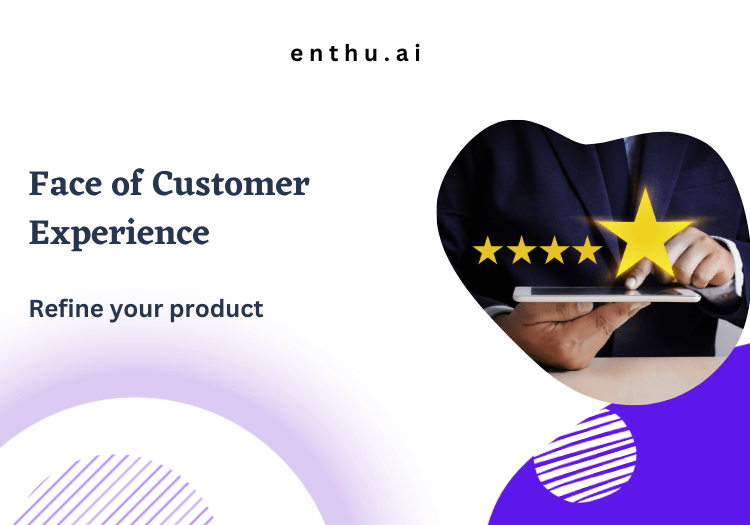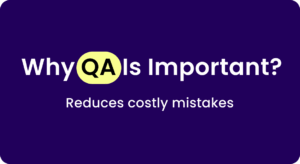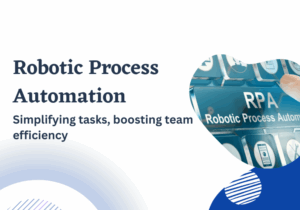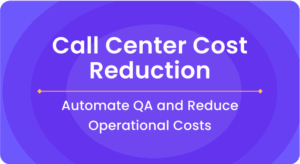This is a new series from Enhu.AI. We are going to talk about customer experience and customer service. This is an endeavor to help.
Let’s understand what customer experience is and how different experts and leaders see it in their careers and in their lives.
Enthu.AI:
Today, we have Mario Simon with us. He has more than 20 years of experience across various contact centers and BPOs.
He has started his career with IBM, Daksh, worked with Sutherland and Inter Global. Right now, he’s heading Operations at Origo BPO in Philippines. Mario brings a lot of understanding in the operational excellence of a contact center, also he has in depth understanding of how customer experience can impact customer service.
So, welcome, Mario, and thanks for being part of the series.
Mario:
Thank you so much. Really glad that I could be here and share some of my insights.
Enthu.AI:
Yeah. So, Mario, I would want to understand a little bit about you from your career point of view, what have you done and how has your career stand in various years.
Mario:
Right. So even before getting into the BPO world, I’ve been part of the Brick and Motor industry working in various domains. I got into the BPO world early 2003. I started off, like most people, is taking calls right. As customer service, so to say customer service representative.
For bankrupt airline in USA, and that was their motivation to go outsource. Right. That was my starting experience. Over the years I grew through the ranks through different functions within the BPO world so Operations, Quality, Service Excellence and Transformation, but largely in customer service and customer service support.
So the journey of the customer service itself has transformed over the years from basic quality monitoring to CSAT, NPS, overall customer experience and customer efforts core as well. So I’ve seen the journey of how the experience has evolved over the years and it’s been tremendous learning for the industry because the customer expectations keep changing and their expectations keep on getting more refined and what’s created. With more and more data being easily available to analyze and use, it becomes more easy for organizations to ensure that the customer experience and customer service is consistent.
Enthu.AI:
Got it. That makes a lot of sense.
So Mario, you were majorly working in customer service side of the things, right?
So I just want to understand that how do you see customer service as a part of customer experience? Or are they same or is there any difference? How do you see it?
Mario:
Yeah, from my perspective and I believe the industry sees it this way, that customer service is a key component of the customer experience overall. So customer experience is every important interaction that the customer has with your product, your people, your technology. So every interaction gives them an experience on how they are getting their unfulfilled met to their company and customer service is when they try to reach out to you in situations where they are needing help and they need to kind of get something resolved.
I know Jason Lamkins in one of his article, one of his annuals, he mentioned how customer service is so important and picking that one call to assist a customer really helps a long way in improving NPS and CSAT.
So customer service is so critical. While you spend millions on trying to refine your product, your features, it’s important to be listening to the customer and pick up that call, get them the help they need. And you have experts here like Origo, BPO, we are here to do customer service. We hire some of the best people to do it and the core business of creating the product and features can be left to the engineers and the business leaders while we take care of the customer service and the expertise around managing CX.
That’s the fine line. Although customer service is truly a great way to improve customer experience.
Enthu.AI:
Got it. That makes quite a lot of sense and my question is that since it’s a very important function as far as customer experience is concerned, we as a customer see it as just a call center, right?
So what’s your perspective? Because it seems that it’s a very low kind of work, which people are doing, and this might be a cost center for the company. So, what’s your views on that?
Mario:
Definitely there are two views and of course, it is a call center, there’s no denying that. But it’s crucial to the customer experience, right? Because it’s just not picking up calls, it’s how fast to pick up. In our measurements, we pick up calls faster than most onshore call centers. Our quality of service is better.
The speed of answering use CSAT scores are all better. So it’s not just about the cost, it’s also about the experience and how it improves.
It definitely impacts your NRR, your sales, your product experience for the customer, because they’re able to get the resolution faster. I know Salesforce says 82% of the customers need resolution first time they reach out to you. And that is enabled by the customer service that we bring in and therefore customer retention and repurchase and upselling cross selling across your product line.
Enthu.AI:
Got it? That makes sense. And the second part of my question was that do you see it as just a cost center or are there ROI which can be defined with this function?
Mario:
Yeah. So like I said, it’s definitely impacting your NRR. So your net revenue retention is there, you have upsell cross sell, you’re also exposing your product features, right? Version for non commercial use.
Are able to see value in buying it because the resolution of any issues is faster and therefore NPS and NPS is the biggest thing. You have people recommending your product to family, friends and that being improved definitely improves your sales. So there’s definitely a return of investment for higher NPS through service.
Enthu.AI:
Got it. Now that you’ve mentioned NPS, why don’t you help us understand what are the measures of success as far as customer service is concerned? NPS being one of them, what do you think are the other measures of success.
From a customer point of view as well as from the business point of view.
Mario:
So NPS is like a VOC, right? It’s a way of measuring the customer experience. CSAT, NPS, customer effort, how much customers spends time in kind of using your product or getting a resolution to the product, it’s very important. NPS gives you a clear indication if your product is going to be recommended or referred by your customers to others and how it correlates to your top line. Is it’s going to increase revenue.
Your net customer retention is high. Your expansion, up selling, cross selling of your products and features is high. And clearly these are the key measurements to look at when you’re looking at customer experience. So CSAT, NPS, customer effort internally it’s definitely net revenue retention and expansion rate.
Enthu.AI:
Makes sense. Makes sense.
Okay, so Mario, there is definitely a transition or at least people are talking about non-human based customer service or customer support.
So your thoughts on it? Right, there are a lot of talks about chat bots, communities, FAQs, which is around 7-8 years but still there is no concrete point of view about them. So what’s your point of view on that?
Mario:
Yeah, it is the new thing.
Post COVID people have been more tech savvy across generations. People are now using various apps to engage interact with the service providers and the chat bot is definitely one huge kind of shift of people trying to get self service right?
People want to be educated so that they know what they’re doing rather than having to ask questions. So if they can self service their issues and resolve themselves, they are more than happy to do that. So we’re seeing customers are more engaged now to use chat bots even through the web troubleshooting Help Desk or even IVR self-services.
Also from click to call right from chat to move to a live agent or speak to someone in case AI is not able to provide them the first time resolution. But in most situation and you are just discussing with one of our AI partners for the knowledge base, 85% of the chat bot as it learns through machine learning, 85% of the self service options resolve queries for most customers. So that’s a huge improvement. And this is machine learning, right? So it keeps improving as you know, the interaction with customers increase. That’s definitely an option for all customer service to have that as your first line of support.
Enthu.AI:
Got it. So this is being accepted now as a norm across various industries and organizations, right?
Mario:
Absolutely. Today, people prefer talking to people on whatsApp, Messenger, viber, the various chat tools, unlike before where they would just call people and talk to them and it’s more convenient, so you can do it on the move and while you’re multitasking, doesn’t require your dedicated time to get things done.
Enthu.AI:
Sure. So, since you mentioned that 85% of the queries are resolved by the self-service methods, what do you think would be the future of agents or the human driven conversations?
Mario:
So two things, right? Most of these AI is powered by humans because not just the knowledge base, but best practices from how the interactions happen, different scenarios. We were talking to one of the field technician companies, right? Where you sent out technicians to fix whether it’s your refrigerator, or any high end services You need person there to fix it, but there are certain things that could be fixed remotely if you could just identify the error code, right? Or identify the beats that you hear from the equipment and be able to do a remote troubleshooting yourself.
However, there would be experts requirement when it gets to a more complex situation and then humans, they manage more meaningful complex situations where you need an expert coming in using his experience and more complex scenarios to fix.
So it’s a blend and the simpler tasks become redundant or completed by AI enabled services.
Enthu.AI:
Got it, my next question would be how does this customer service, they feed to other departments? I’m sure that there would be a lot of customer insights which you would be generating while you are talking to a customer which might be useful for maybe a marketing, a product team and operations team. So how does that work?
Because you in a way customer service or customer support becomes the first touch point whenever a customer is facing a new home.
Mario:
Oh yeah, that’s a very good point. What happens is VOC is very critical, right? I mean it’s not just a number that you see, but how do you capture the VOC how do you analyze it, what actions you take on it and then capture feedback again on this action is very important.
And what we do is at Origo we are analyzing all the data that we get, whether it’s feedback through phone surveys, through web surveys, whether it’s speech analytics of recorded calls, text analysis of the social media updates. All of those are then categorized into different categories of improvement. It’s then shared with the various team, whether it’s product development team or a sales team, whether it’s customer service itself and how to improve, changing the hours of work, the different language to support. So there are various aspects of the customer analysis of their VOC that helps us.
And this is where marketing comes into play. The VOC has to go back to the customer that we’ve heard what you said and this is what we’ve done. These are the changes that the organization is looking to implement. So each function has their role to play when we kind of analyze the VOC and share it with each function.
Enthu.AI:
Got it. So you mentioned the text analysis from social media as well, right. So I think that becomes interesting because generally we see customer service as more of a reactive approach where somebody is calling you whenever he’s in a trouble or somebody is trying to get a resolution from you or some information but it is initiated usually by a consumer or a customer. Right.
While you are doing a text analysis, you are trying to understand what is the general perception of your brand, with various customers?
So how do you see that as a part of the entire customer experience?
Is it just a small part or is it becoming bigger? How is that shaping up?
Mario:
Yeah, it’s significant part these days, right? Because people are more on social media these days. So if you have small issues that hasn’t stopped you from using the product, you wouldn’t necessarily pick up the phone and call customer service. You’ll just find a workaround to do it. But people are posting even the smallest minute feedback on social media and a social media wall helps us capture and display this feedback effectively.
Therefore, text analysis is significantly important these days and that data is so easily available today through IoT, right? You can kind of pick up the data, analyze customer sentiments, and make sure new features, or existing features and products are updated. Those are feedback readily available.
You don’t spend too much on capturing through surveys or reaching out to customer. It’s there. Pick it up.
You could look at competitor’s feedback. Understand what people are seeing as a differentiator between you and your competition. There are various kinds of analysis available in text analytics for social media platforms, so we expertise in that provide insights to our customers and how we can not only improve our product features and services, but how people perceive the business against the competitors and evolving through time? Right. Like you said, it wasn’t used before, but now with big data IoT coming into place, data being easily available, it’s playing a significant part in how customer service and product shapes itself
Enthu.AI:
Got it!
And my last question, how do you see Metaverse sitting in the entire customer experience? Because definitely there are a lot of talks about NFTs, Metaverse. I was talking to somebody and he was just saying that perhaps the agents and the customers at some point in time would be talking to each other in a Metaverse. What’s your thoughts on it?
Mario:
Yes. Wouldn’t that be a wonderful place to be right where you have your customer right in front of you at your outlet in a Metaverse. And discussing your issues, giving them and in person experience in the Avatar world of Metaverse It’s fantastic.
We’re really looking forward to how that shapes up. We’ve had a couple of conferences that we attended which was headed by some of the BPO companies. And it was quite interesting how we engaged in the meta in these conferences, but it still has some time before we get into that engagement. It will be quite an interesting aspect of technology being used to improve customer experience so it will be a different way of connecting for sure.
Enthu.AI:
Great. So I think that’s it from my side, Mario, and I am really really thankful to you for taking the time for this. It was a very insightful discussion.
I got to learn a lot of things from your experience so I’m looking forward to know more about the customer experience and about how Origo particularly shaping the customer experience in future. So thanks once again.
Mario:
Thank you so much Enthu.AI, it was fantastic session. Very nice talking to you today. And yes, thanks for having me.
That’s it from this discussion guys and we will come up with more such discussions and insights in future. Keep tuning in and do try and thanks.
Dive into the detailed discussion with Mario Simons from Origo BPO:


 On this page
On this page








